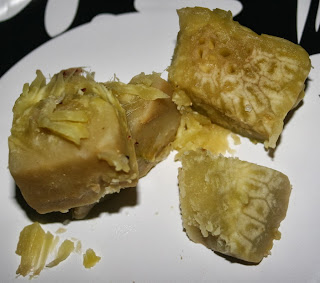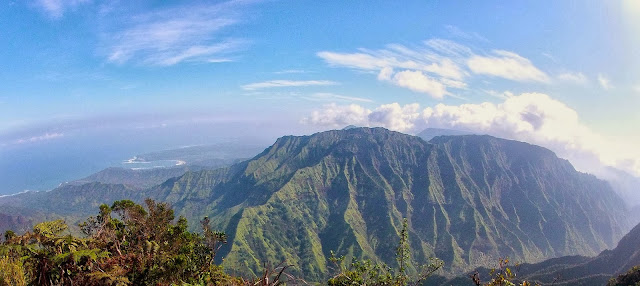The Ten Essentials
Any hiker heading out into the wilderness should be familiar with and carry along the Ten Essentials. Years ago I read through a list of ten things to be vaguely recalled while stocking up for a hike but after yesterday's hike I refreshed my familiarity with these. I found out that there are numerous variations on the theme and that while they for the most part agree on the most basic essentials, they vary somewhat as well. Based on three prominent examples here is a compendium in no particular ordering:- Navigation (map, compass, GPS)
- Sun protection
- Insulation
- Illumination
- First Aid
- Fire starter
- Repair kit and tools
- Hydration
- Nutrition
- Emergency shelter
- Knife
- Footwear ("appropriate" they say but I find it hard to predict what terrain will be like)
- Whistle
- Backpack
- Rain gear
- Sunglasses
- Toilet paper
- Duct tape
- Bug repellent
- Trash bag
- Emergency info (contact info, medical details, insurance details)
The one essential
So yesterday I was up before dawn gathering a good dozen "essentials" for an early start hiking. To get on the road quickly I packed breakfast to go, loaded up the car and headed off. I had not yet decided exactly on the hike so threw in more than enough stuff, three types of footwear, the works: I would figure it out at the trailhead and pack there seeing actual conditions, after breakfast at the beach.
I decided on hiking up the Kalalau trail at least to Hanakapiʻai beach (just two miles). Arriving at Keʻe beach, where the trailhead is, good and early (around 7am) and the breakfast on the beach part was great. Nobody was out there, waves rolling in, sky looked fairly clear promising a fine day. Back to the car and immediately I noticed something missing: my backpack (Essential #14 above). I had plenty of gear but it was in a Longʻs shopping bag which I was not carrying on the trail for obvious reasons. All the way out there with all that stuff but ... I considered and rejected asking other hikers arriving in the parking lot, "Hi, do you have an extra backpack I could borrow?" Not cool, and unlikely to work.
With just two hands I considered the essentials from a minimalist perspective. Sun protection (#2) I could apply now before leaving, no problem there. Navigation (#1) I had in my phone. One essential (#8) I knew was really truly essential: water; I would carry my two liter (Platypus brand) bag of water. I see people walking this trail without water and consider that fairly reckless: unless you are just going a short way and turning around - and you see them as far as the beach empty handed and no pack - no matter how young and fit it isnʻt hard to get dehydrated out there. Drinking from the streams along the trail is risky without disinfecting (Hawaii department of health). Water is truly the one essential.
Reluctantly, I left my camera in the car - not an essential of course but a major purpose of my hikes usually. With water in one hand operating the camera would be rather awkward. Since it's a very well-traveled trail I was not worried about emergency supplies as I would definitely not be alone out there.
Hanakapiʻai Falls hike
Heading up the trail at first felt odd with nothing on my back, but it worked fine, the two kilos of weight wasn't a problem to carry, and of course it got lighter as I went. It was a warm day even before the sun was high enough to reach over the steep mountains the Kalalau trail winds through.Hiking light and sans camera was surprisingly a different experience. For even the most dedicated nature photographer I recommend it every once in a while to put things in perspective. At first the old habit was strong: seeing something unusual, a gorgeous view, or perfect flower, the impulse to shoot it is strong. But this time instead I stopped to look at it carefully, knowing I would not have a photo to prod my memory later I tried to really absorb it and experience it right there. With photos, for me at least, there is a terrible habit to think that once the photo is properly shot I can move on and appreciate it later on a screen. This exercise showed me how wrong that thinking was.
For two miles the trail winds along the coast climbing from the just-above-sea-level parking lot high about the water, and also following back into a few small valleys where streams cut through the mountain, and then back out again over the ocean. At about the half mile point is the first long view down the Na Pali coast, well worth stopping for a good look. The second mile of this trail is crawling with ants weaving around like a very thin moving carpet at times; if you keep moving you can ignore the ants but if you stop to gawk at the view make sure they arenʻt crawling onto your shoes and legs.
After two miles you descend to the Hanakapiʻai stream with a nice beach just on the other side. This time the crossing was an easier boulder hop than I expected. (As always use caution around waterways here. Never attempt to cross a fast moving stream when the water level is above your knees. People have been trapped overnight out here, unable to cross back, and some who tried to cross anyway have been swept away and perished.)
It wasn't even mid-morning yet as I crossed and headed mauka along the trail on the far side of the stream. Within a short distance after passing an outhouse, the Kalalau trail splits off to the right heading further along the shoreline, with my trail to the falls continuing straight upriver.
There is some serious mud along the first half mile: sticky, gooey, unavoidable, but not very deep. More of a problem of slipping and sliding than sinking in but it makes footing treacherous and is messy. Recently I complained about the mud on the Pihea trail but this is worse. Take it slow, accept that you will have to wash your shoes up, and it isnʻt that bad. Incidentally, I ran into a couple that I met on that trail last week. They did a week on Maui, a week here, and next plan a week camping on the Big Island.
By the time you get to a second bamboo grove the worst of the mud is behind you, though of course you will return through it all again. Less than a mile upstream you have your first crossing to an island in the stream and then over to the side you started out this hike from. The trail can get a little vague in places, look for pink plastic tape showing you key waypoints. You will have a few options for where to cross the river: look for where the trail picks up on the far side as hint. This time I found reasonable boulder hop crossings all the way, never set foot in the water, but it took a little studying at a few points. As always, use good judgment: sometimes it's safest to just walk through the shallow water and get wet.
The trail is very pretty here (much less mud this side) and only a few tricky spots you will want to slow down and take it easy. Did I mention there were yellow guava dropped all over the trail (mostly overripe) most of the first half or more of the trail upstream? Somewhere past one mile upstream watch for your first view of the falls - the drop is high enough that in some ways you get your best view from well away as you can take it all in.
The last two stream crossings - over to the far side and back again - are fairly close to the falls and easier than the downstream crossings. At the first of these there is a good sized waterhole for swimming that looks deeper than the large pool at the base of the falls. A few minutes walk brings you at last to the falls. You are in a U-shaped end of the valley the stream runs through with high cliffs curving around, all covered in green. At the top center a river runs out over the edge, falls a ways onto jagged rocks, and then tumbles down, spreading out, over the rocky cliff face to the large pool below. Said to be 300 feet high, the falls from that close up are more than you can take in from top to bottom in one view. Spectacular, but sorry this time no photos.
After sitting there and taking it all in for a while, I headed back over the same trail. I must have been first one out that day (along with the couple mentioned) but returning ran into perhaps fifty or more people hiking out toward the falls. After spending a little time at the beach I headed back, water nearly gone by the time I made it back to the parking lot. (I donʻt recommend hiking without a backpack but for me, that day, it worked out fine. A few times on the trail I had to duck under a tree or something and thought it was nice not to have a pack to get in the way.)
Photography while hiking is a great activity - I do not mean to say otherwise - but it should never get in the way of the actual experience of the place. None less of an expert than Louis CK recently observed how taking photos can become ritualized to the point of getting in the way of real experience. (Also allow me to insert here a recommendation for an excellent Bill Moyers interview on how digital can easily get to be too much.)
"Every single person was blocking their vision of their actual child with their phone, and the kids ... there's people holding iPads in front of their faces. "For details on how to get to this great 8 mile strenuous hike, see my previous article. Safety first: if there has been a lot of recent rain or significant rainfall is predicted, hike somewhere else.



















